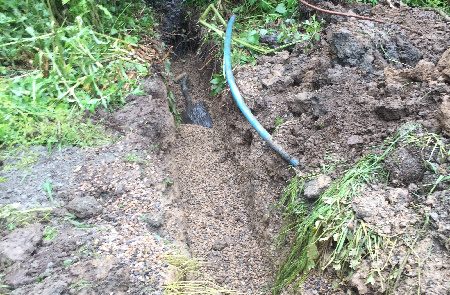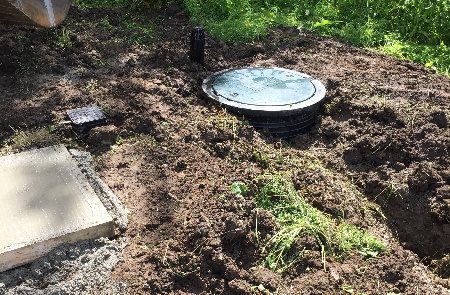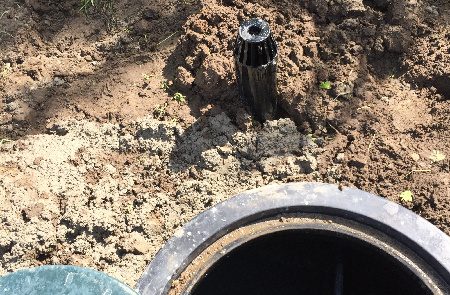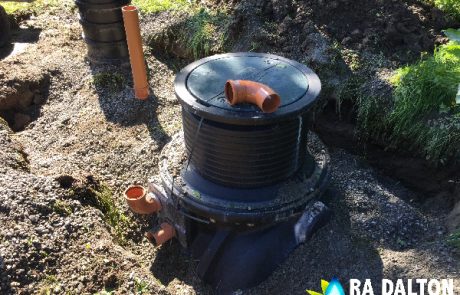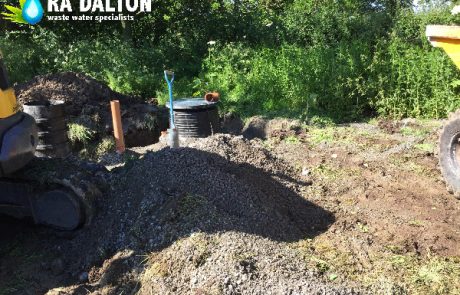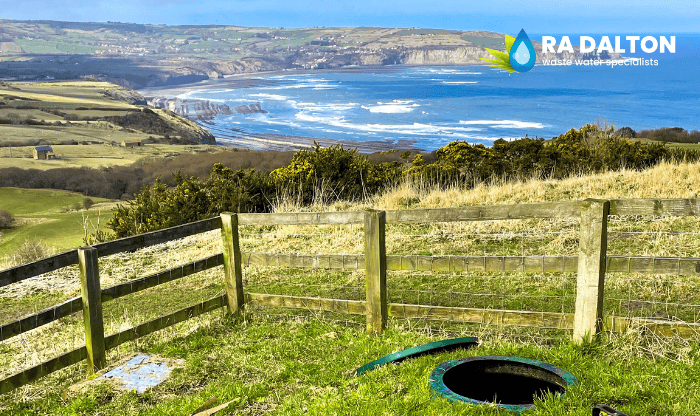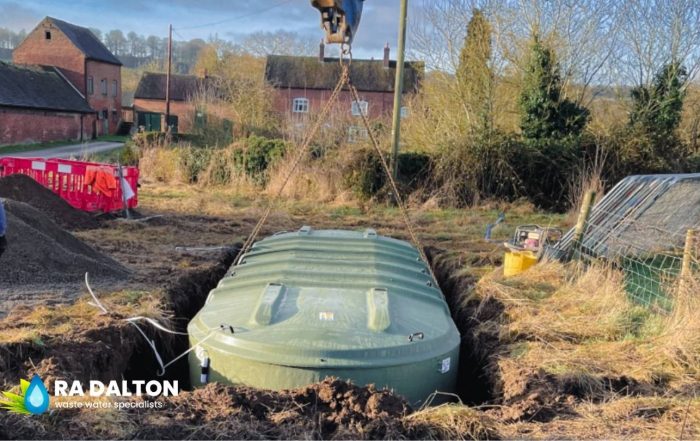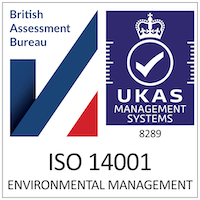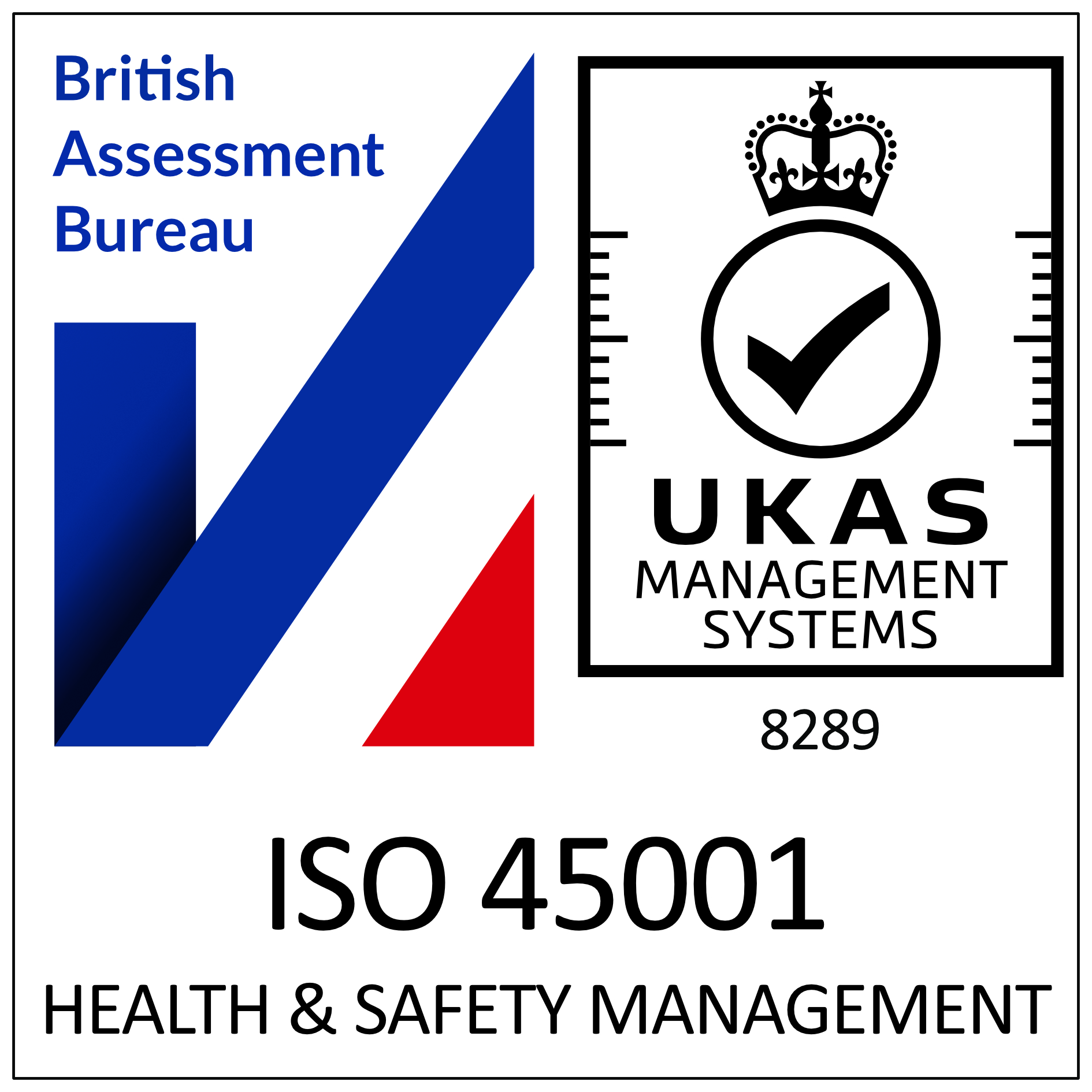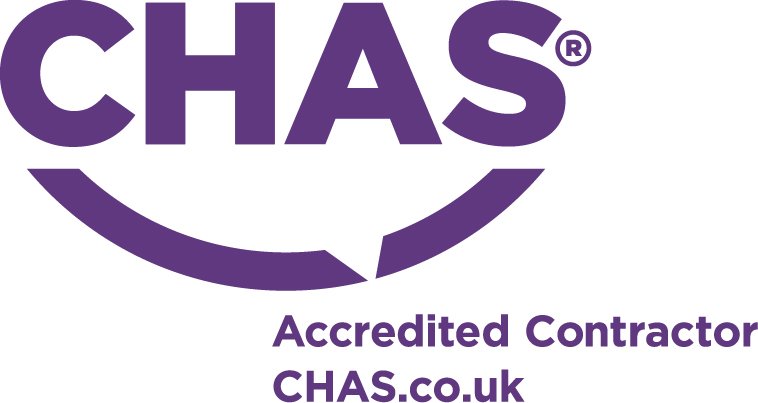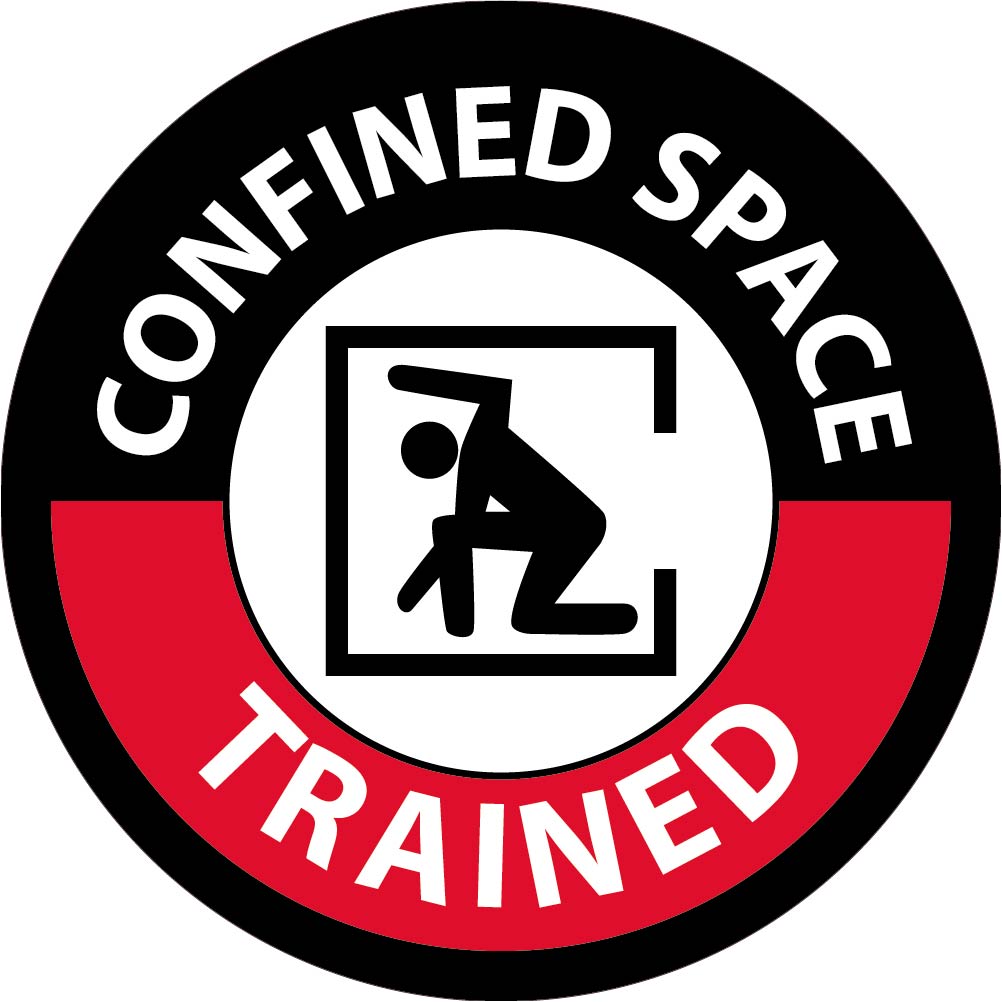RA Dalton Success Stories
RA Dalton Ltd are the Klargester number one accredited installer covering the whole of the UK.
A Merry little Bioficient installation in Darlington.
Although a lot of our jobs allow our engineers to travel to the furthest corners of the country, see some of the most beautiful countryside and meet a variety of different people it is always a welcome relief when there is a job a bit closer to home.
In February our contracts manager Ian Murray attended a site near Darlington to carry out an investigation and provide a quotation for a new sewage treatment system. We proposed that the old, failing septic tank and soakaway was completely replaced with a package sewage treatment system.
The Kingspan Klargester Bioficient 1.
The system we recommended was the Klargester Bioficient 1 Sewage treatment system which would be to discharge the treated effluent directly to the adjacent drainage ditch. Alongside this we suggested that the best course of action was to break into the existing inlet drainage which was located in the field close to the fence line of the garden.
Whilst conducting the initial site visit Ian identified that there was a possible requirement for a pump, this would have to be determined at the time of installation depending on the levels from the tank installation.
Due to the fact the system was to be installed on the pre-existing inlet drainage run there was only a requirement to install outlet drainage to the new discharge point, as a result there was approximately 20 metres of 4” pipework installed from the new tank to the ditch.
2020 General Binding Rules Compliance.
As far as the installation of the tank went we used 6 meters of C25 OPC Dry concrete, this is the standard recommended amount of concrete to install one of these smaller domestic sewage treatment plants; on all of our sites we tend to use between 4 and 6 metres of concrete to fully encase the vessel, the amount required generally depends on the ground conditions for site.
Although some manufacturer’s offer an option for granular backfill for their tank we always install tanks in a full concrete encasement, in our professional opinion this is the most effective method and if done correctly safeguards against issues further down the line.
Other issues can occur with installations where the wrong slump of concrete is used, if this is the case the results of this are usually visible within a few days of the tank being in the ground. If the slump of the concrete is too wet the tank can move and either distort the levels or even pop out of the ground.

